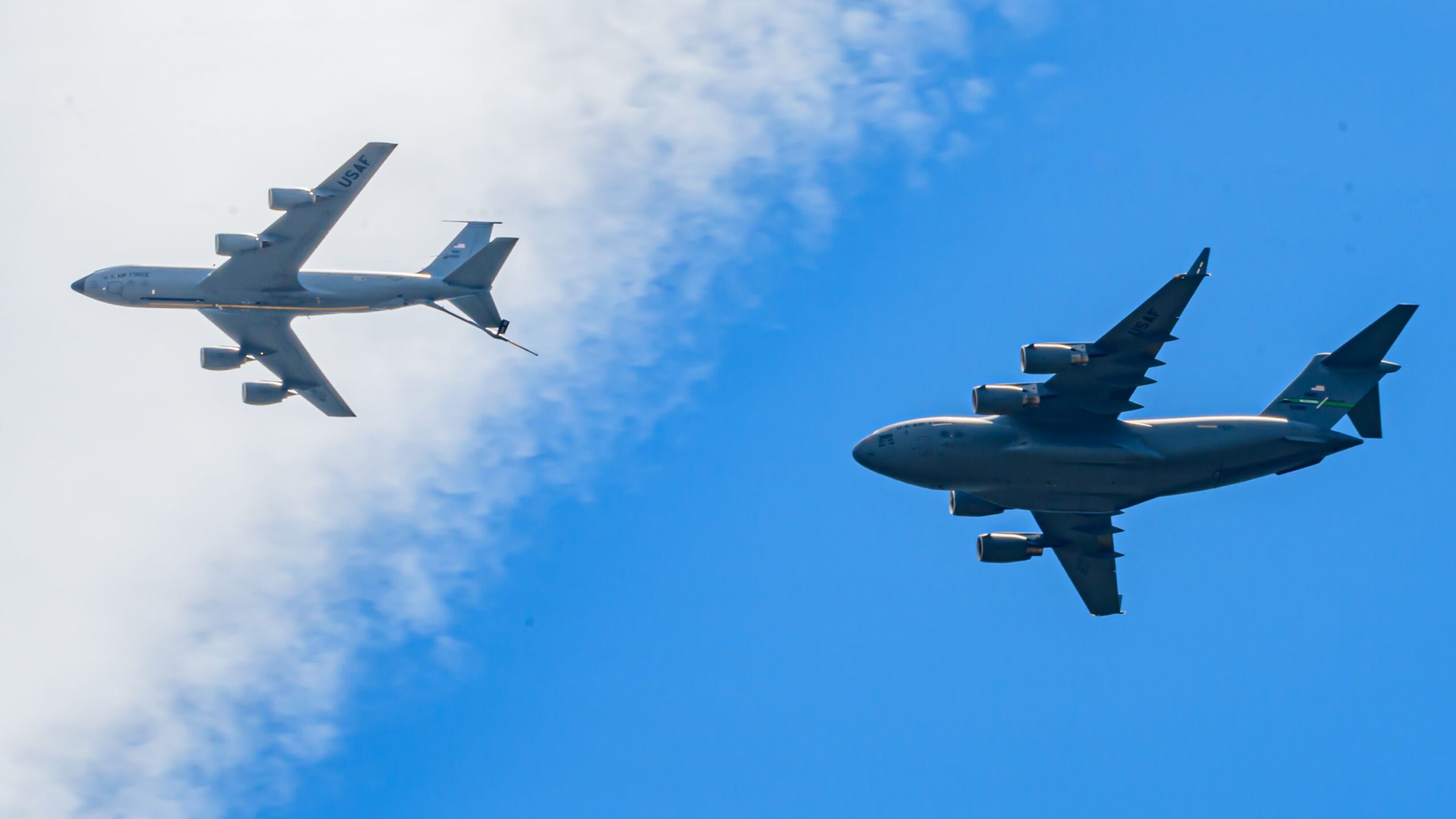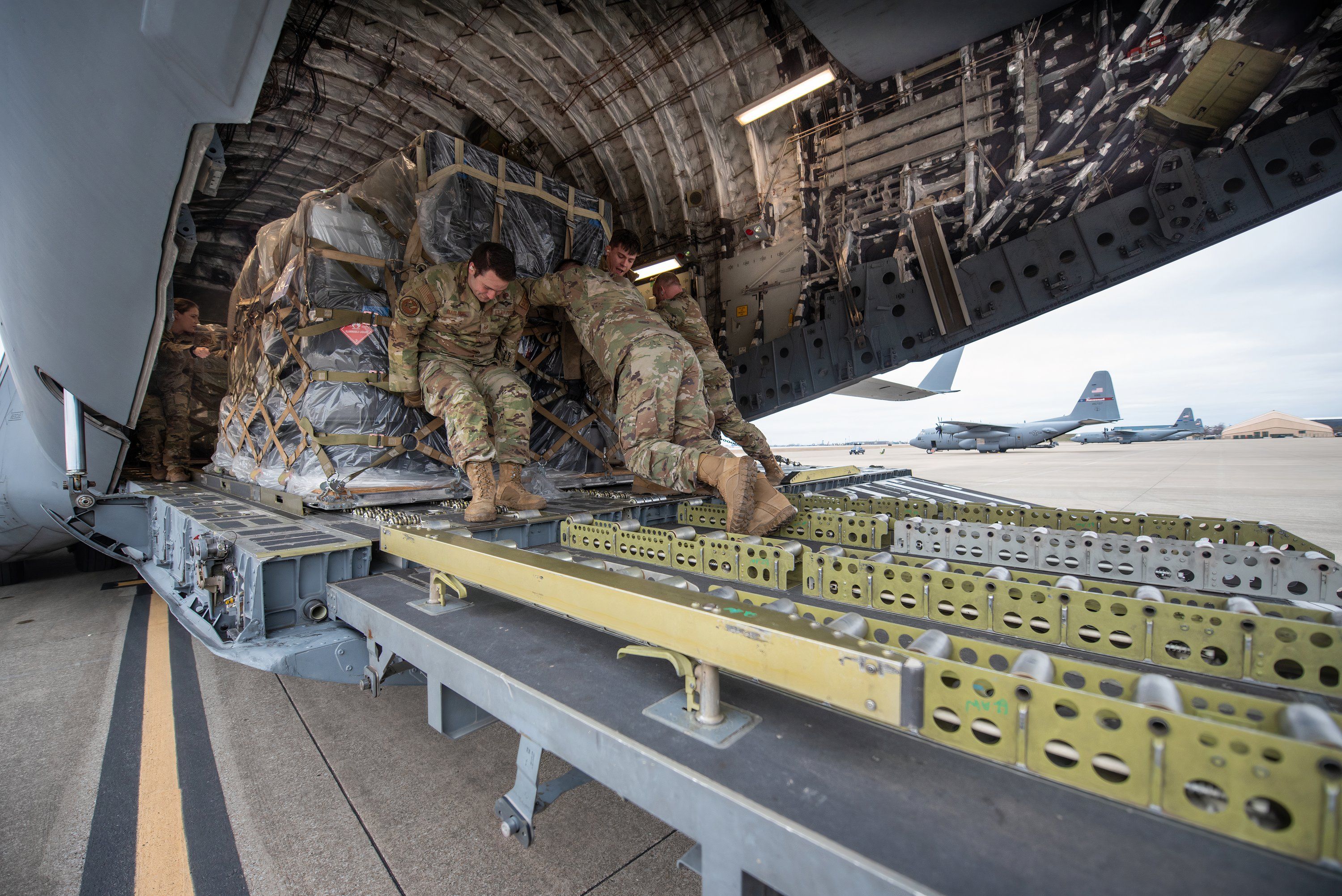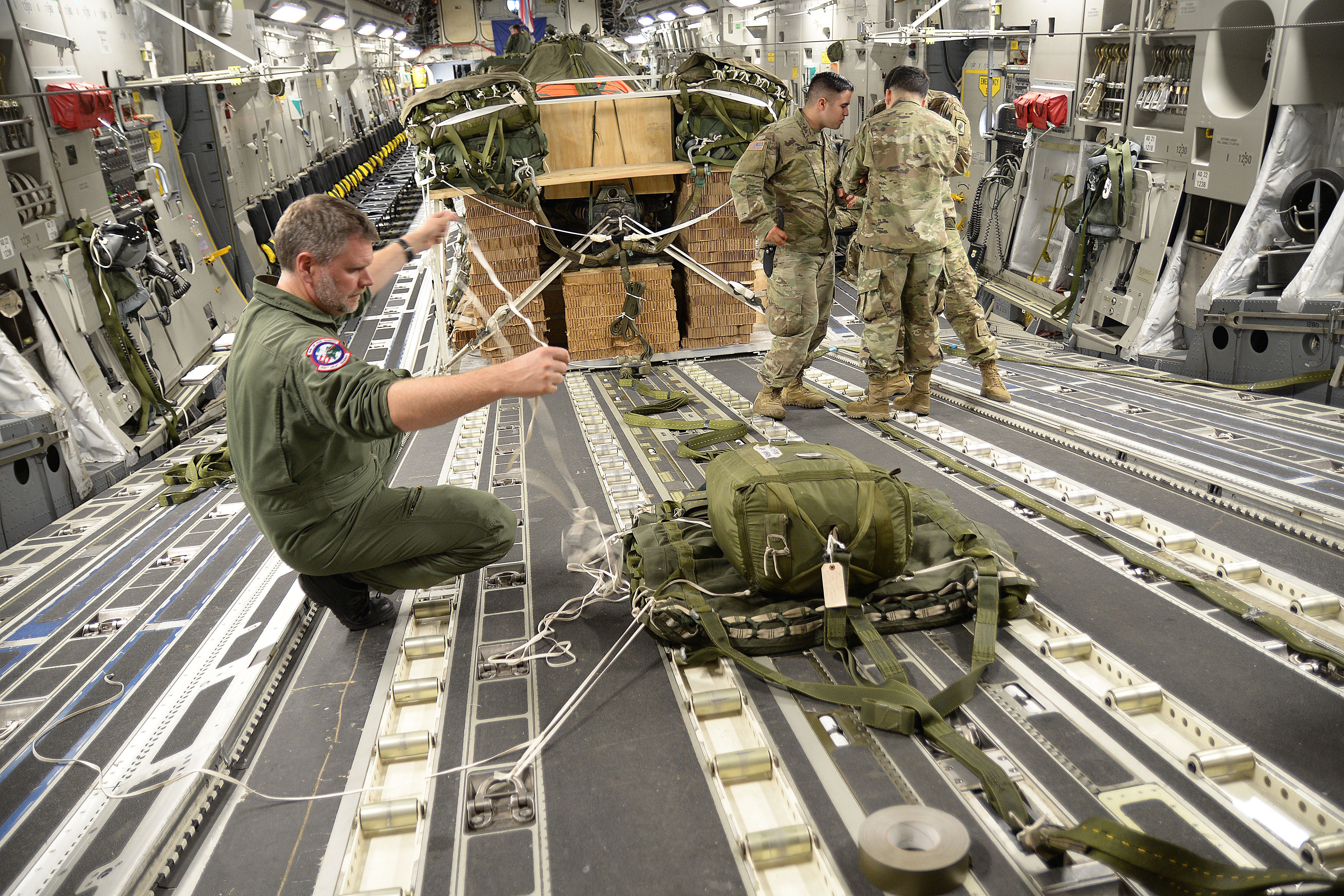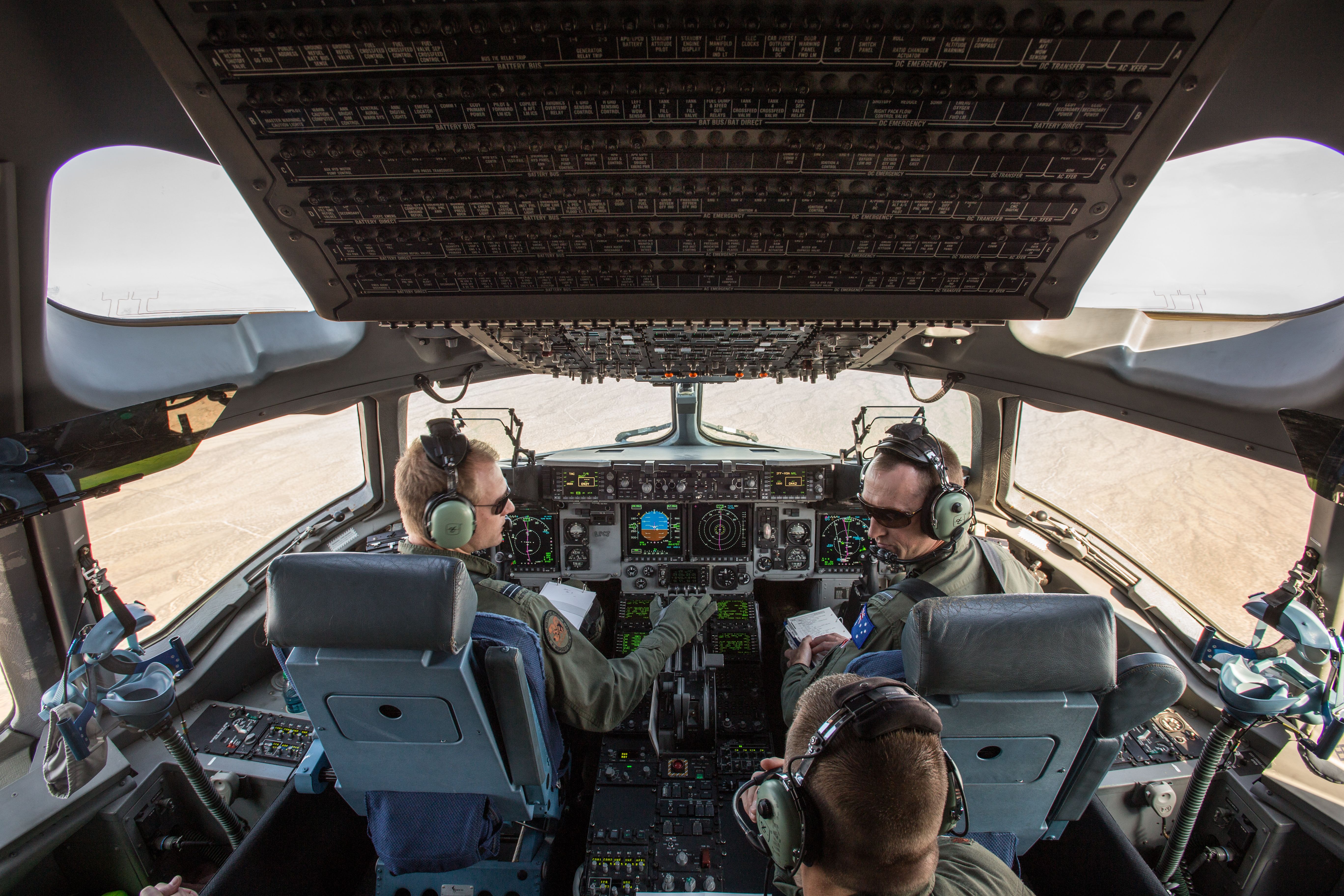Summary
- C-17’s cargo capacity includes military vehicles, troops, and aid, enhancing both combat and humanitarian missions.
- The aircraft’s STOL capability enables access to remote areas, showcasing its versatility in various operational settings.
- In-flight refueling extends the C-17’s range, supporting prolonged airborne missions, which are crucial for global reach and swift responses.
The Boeing C-17 Globemaster III is one of the most advanced cargo aircraft used by the United States Air Force (USAF). Known for its impressive capabilities and versatility, the C-17 plays a critical role in military operations around the globe.
As the demands of modern military and humanitarian operations continue to evolve, the C-17 Globemaster III remains a critical tool in the USAF’s arsenal, embodying versatility and reliability, thanks to these five key operational features:
1
Exceptional cargo capacity and flexibility
It is one of the largest military airlifters in the world
The C-17 Globemaster III is designed to carry a wide range of cargo, including troops, vehicles, equipment, and humanitarian aid. Its spacious cargo bay and robust design allow it to handle diverse payloads.
Photo: USAF
The C-17’s ability to transport large and heavy cargo quickly and efficiently makes it a vital component in both combat and humanitarian missions, ensuring that necessary supplies and equipment can reach even the most remote locations.
|
Cargo Capacity |
Loading Capabilities |
|
|
|
According to the US Department of Defense, the aircraft’s cargo hold can accommodate military vehicles, including the M1 Abrams tank or up to ten up-armored Humvees, and can be configured to transport oversize cargo with ease.
The rear loading ramp facilitates rapid loading and unloading, which is crucial in time-sensitive operations.
Photo: USAF
This flexibility makes the C-17 essential for missions that require rapid deployment and redeployment of troops and equipment, contributing significantly to the USAF’s operational effectiveness.
2
Advanced aeromedical evacuation capabilities
A hospital in the sky
The C-17 Globemaster III can be equipped with state-of-the-art medical facilities, allowing it to serve as an airborne hospital for medical evacuation missions.
This capability is crucial for providing immediate and advanced medical care to wounded soldiers.
The Globemaster III is not only a critical asset for the USAF’s own troops but also for civilians in crisis zones who require evacuation and medical aid. According to the USAF, the spacious aircraft can:
- Accommodate up to 36 litter patients and 54 ambulatory patients
- Be equipped with life support systems and medical equipment
- Rapidly be reconfigured to accommodate urgent medical needs
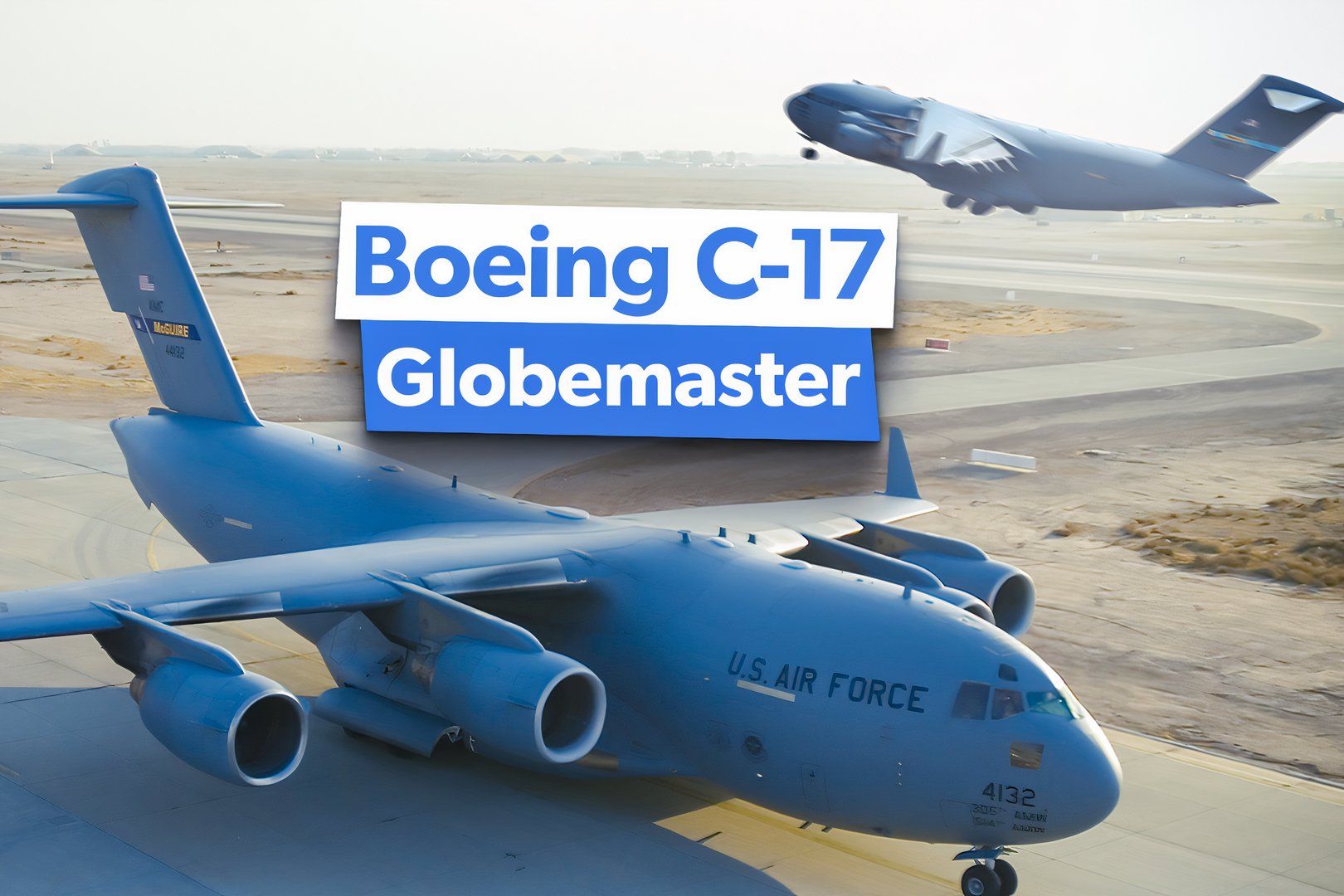
Related
What Is The Boeing C-17 Globemaster III Used For?
It is the ultimate workhorse, capable of carrying personnel, equipment, and even military vehicles.
These features ensure that the C-17 can provide immediate and advanced medical care to wounded soldiers and civilians, significantly improving survival rates and outcomes during medical evacuations from conflict zones or disaster areas.
3
Short Take-Off and Landing (STOL) capability
Don’t be fooled by its size
One of the standout features of the C-17 Globemaster III is its ability to operate from short and unpaved runways, making it exceptionally versatile for various operational environments.
Despite having a Maximum Take-Off Weight (MTOW) of 585,000 pounds (265,352 kilograms), the Globemaster has a surprisingly short take-off and landing distance. This is further enhanced by its powerful reverse thrust engines that provide rapid deceleration.
The Short Take-Off and Landing (STOL) capability of the C-17 allows it to deliver supplies and personnel to locations that are otherwise inaccessible to other large aircraft, enhancing its operational flexibility and strategic deployment options.
This feature is particularly valuable in humanitarian missions where infrastructure may be limited or damaged.
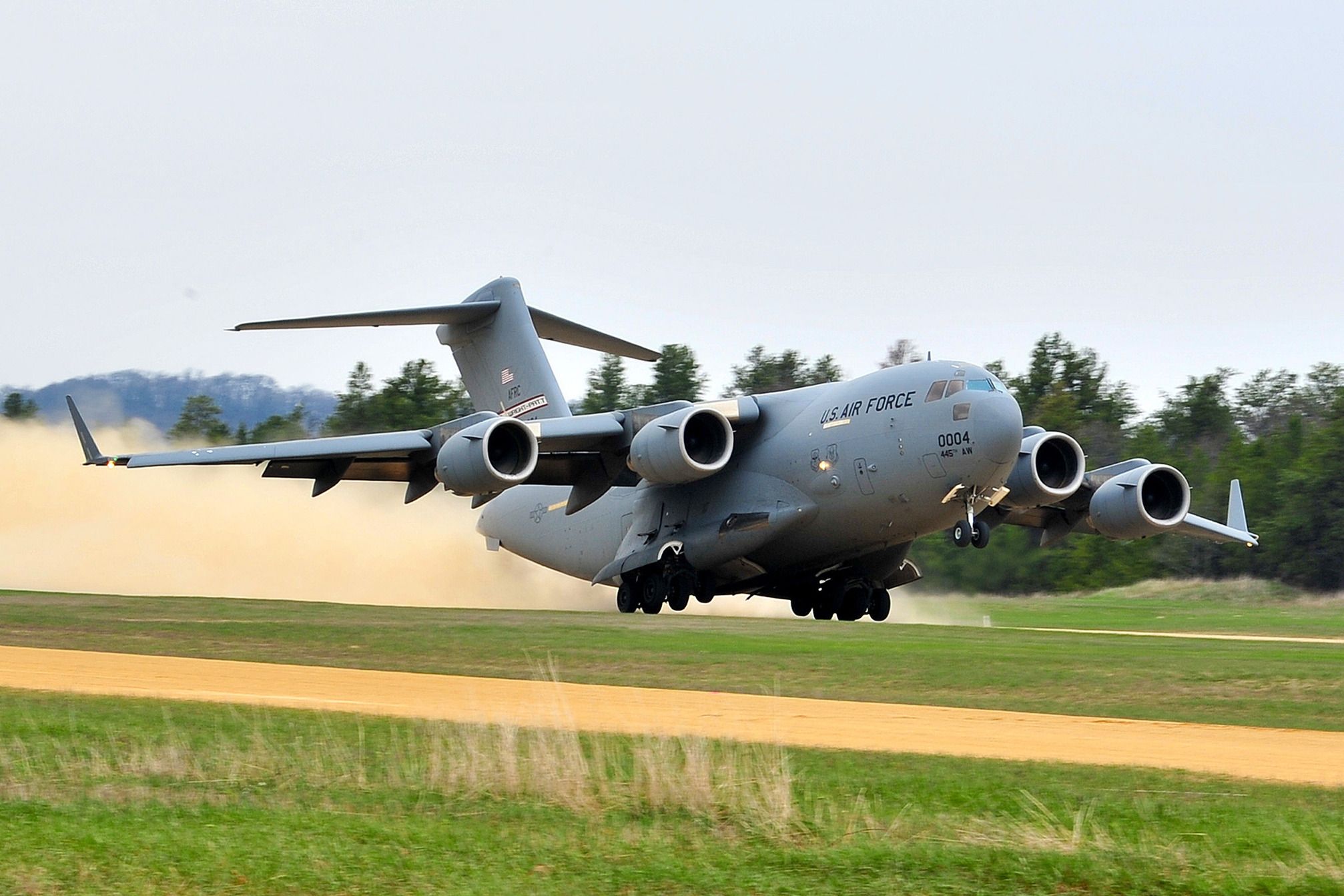
Related
5 Amazing Figures That Highlight The Performance Of The Boeing C-17 Globemaster
It is used by nine air forces globally.
According to the US Government Accountability Office, the Globemaster III requires the following distances for take-off and landing:
- Take-off: 3,000 feet (914 meters)
- Landing: 3,500 feet (1,067 meters)
4
In-flight refueling
For extended range and endurance
The C-17 Globemaster III is equipped with an in-flight refueling system, extending its range and operational endurance. This capability is crucial for long-range missions and rapid global mobility.
On its own, the Globemaster III already boasts exceptional range and endurance. With 157,000 lb (71,214 kg) of payload, the aircraft can cover distances of up to 2,420 nautical miles (2,780 miles / 4,480 km).
According to Joint Base Charleston, this range is extended to global coverage thanks to aerial refueling.
The in-flight refueling capability ensures that the C-17 can remain airborne for extended periods, supporting sustained operations and enhancing the USAF’s global reach and rapid response capabilities – a particularly valuable feature in humanitarian missions where infrastructure may be limited or damaged.
|
Refueling Features |
Operational Impact |
|
|
|
5
Advanced avionics and defensive systems
Not just an airlifter
The C-17 Globemaster III is not just any ordinary airlifter – it is equipped with cutting-edge avionics and defensive systems, providing enhanced situational awareness, navigation, and protection against threats.
According to Acquiring the C-17 by Betty R. Kennedy, the Globemaster III was McDonnell Douglas’ first effort at developing and integrating complex avionics systems.
These advanced systems enable the C-17 to operate effectively in contested environments, ensuring safe and reliable mission execution even in hostile territories.
The C-17’s advanced avionics features include:
- Global Positioning System (GPS) and inertial navigation systems
- Advanced communication and data link systems
- Digital cockpit with multifunction displays
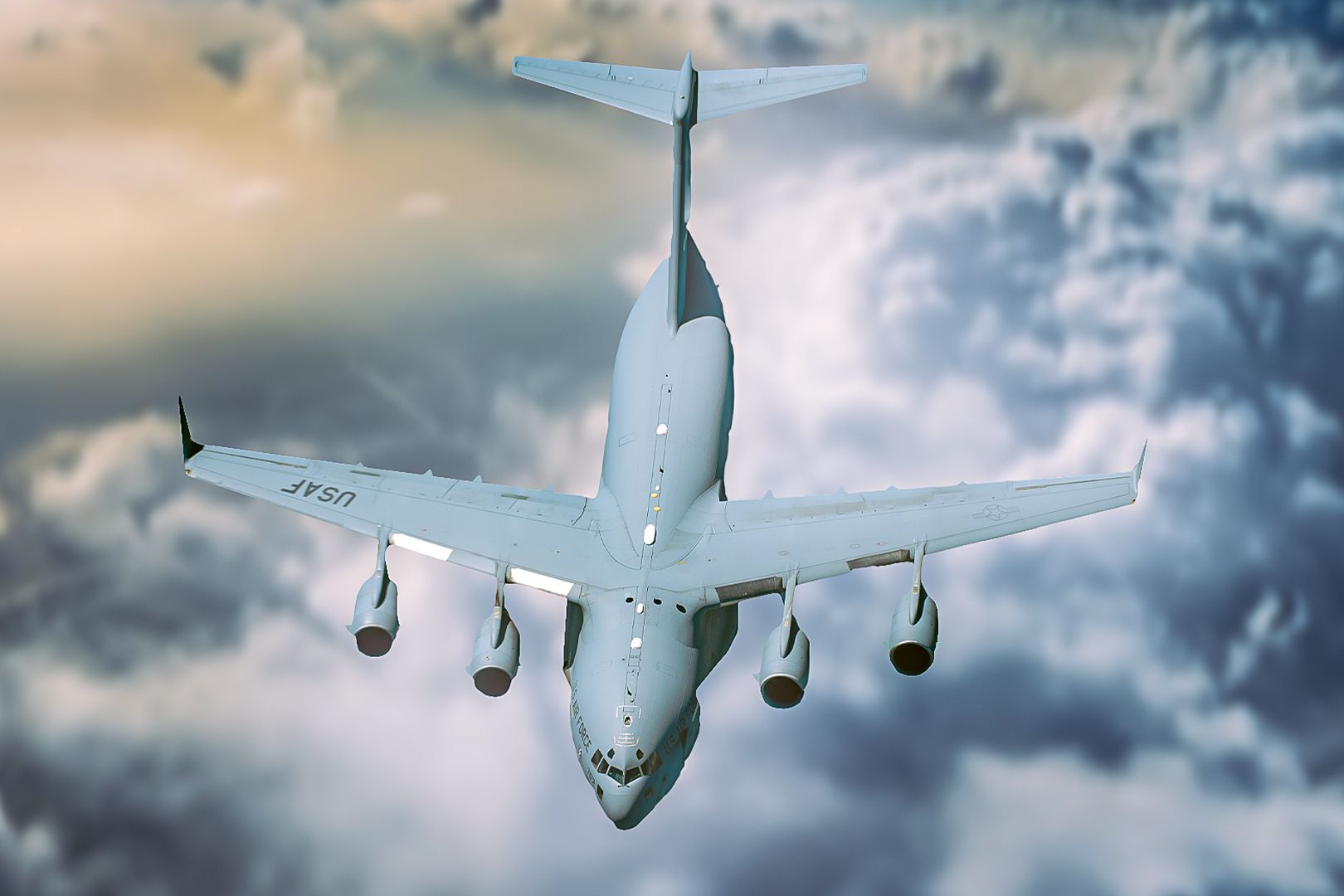
Related
5 Amazing Facts About The Boeing C-17 Globemaster III “Moose”
The C-17 Globemaster III is claimed by the Air Force to be its most flexible heavy transport aircraft and is key to projecting power.
From its exceptional cargo capacity and advanced medical evacuation capabilities to its STOL proficiency, in-flight refueling, and state-of-the-art avionics, the C-17 Globemaster III is designed to meet a wide array of mission requirements.
These features make it an invaluable asset for military operations, humanitarian missions, and global response efforts.

